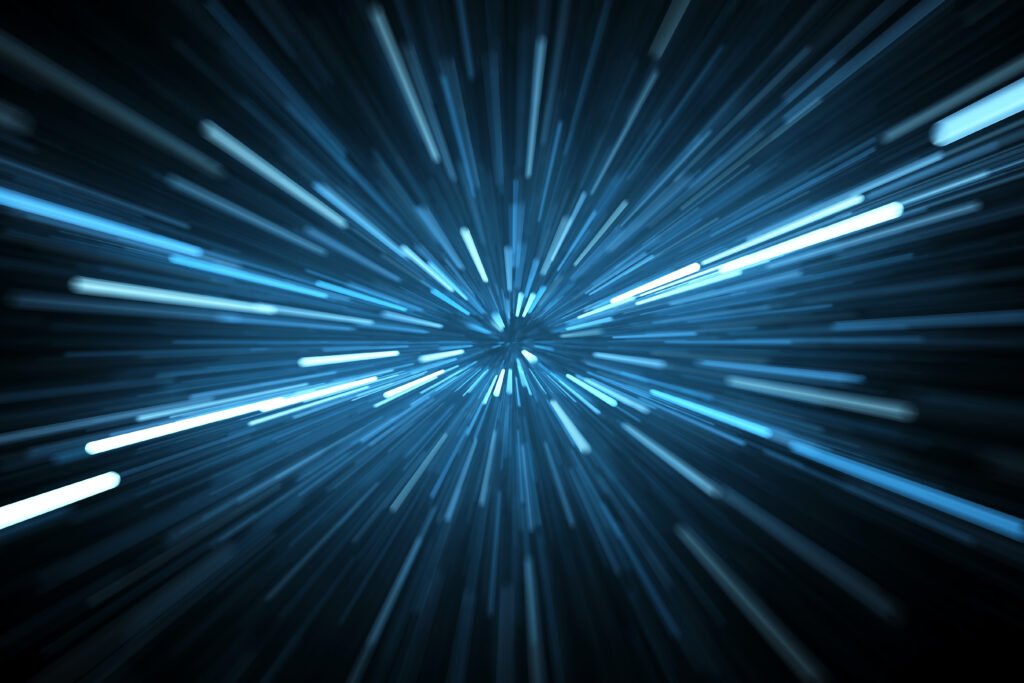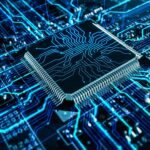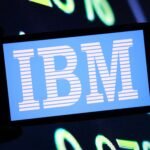Quantum computing is a game-changing technology that uses the strange rules of quantum mechanics to solve certain problems much faster than regular computers. At its heart is wave-particle duality, a mind-bending idea shown by the double-slit experiment, where tiny particles like electrons or photons act like waves when nobody’s watching, creating wavelike patterns, but act like solid particles when observed, hitting specific spots. This weird behavior, debated by giants like Albert Einstein and Niels Bohr, powers quantum computers by letting them explore many possibilities at once. Experiments, especially Alain Aspect’s in 1982, proved Bohr’s view that particles can be both waves and particles, paving the way for quantum computing. This article dives into wave-particle duality, the double-slit experiment, its history with the Einstein-Bohr debates, the key experiments that settled the argument, and how recent advances have made quantum computing real as of July 18, 2025.
Non-Technical Explanation: Waves When Unobserved, Particles When Observed
Imagine throwing a handful of tiny marbles at a wall with two small holes, with a screen behind it to catch them. If you don’t watch the marbles, they make a pattern on the screen like ripples in a pond, with stripes of lots of marbles and gaps with none. This happens because the marbles act like waves, spreading out and going through both holes at once, mixing together to form that striped pattern. But if you put a camera at one hole to see which way each marble goes, the pattern changes to just two piles of marbles—one behind each hole—like they’re solid particles picking one path. This is the double-slit experiment, showing that tiny things like electrons or light particles (photons) act like waves when you don’t watch them but like particles when you do.
This odd behavior is what makes quantum computers so special. Regular computers use bits, which are like light switches—either on (1) or off (0). Quantum computers use qubits, which are like switches that can be on, off, or both at the same time, thanks to their wavelike nature. This lets quantum computers try tons of solutions all at once, like the marbles going through both holes. They could solve tricky problems, like figuring out the best delivery routes or designing new medicines, much faster than regular computers. Albert Einstein thought this wave-particle idea was too weird and argued there must be a hidden reason particles act this way. Niels Bohr disagreed, saying particles really are both waves and particles, depending on whether you watch them. Experiments, like one by Alain Aspect in 1982, showed Bohr was right, helping scientists figure out how to build quantum computers. The catch is that qubits are super delicate—like a wavelike bubble that pops if you touch it—so it took years of breakthroughs to make quantum computers work.
Scientific Explanation: Wave-Particle Duality and Quantum Computing
The Double-Slit Experiment
The double-slit experiment is a foundational demonstration of wave-particle duality, showing that quantum particles (e.g., electrons, photons) exhibit wave-like behavior when unobserved and particle-like behavior when observed. The setup involves:
- A source firing particles at a barrier with two slits.
- A detection screen recording where particles land.
Key Observations:
- Unobserved (No Measurement): Without a detector at the slits, the screen shows an interference pattern—alternating bands of high and low particle density. This indicates wave-like behavior, where the particle’s wave function passes through both slits and interferes with itself. The wave function is:
[ |\psi\rangle = \frac{1}{\sqrt{2}}(| \text{slit 1} \rangle + | \text{slit 2} \rangle) ]
The probability density, (|\psi(x)|^2), includes interference terms, producing the pattern.
- Observed (Measurement at Slits): When a detector measures which slit the particle passes through, the interference pattern vanishes, and the screen shows two clusters, indicating particle-like behavior. Measurement collapses the wave function to a definite state (e.g., (| \text{slit 1} \rangle)).
This is explained by the Copenhagen interpretation, where measurement collapses the wave function. The de Broglie hypothesis (1924) supports this, stating that particles have a wave-like nature with wavelength:
[ \lambda = \frac{h}{p} ]
where (h) is Planck’s constant and (p) is momentum.
Quantum Computing and Superposition
Quantum computing harnesses wave-particle duality through superposition, where qubits exist in a wave-like combination of states:
[ |\psi\rangle = \alpha|0\rangle + \beta|1\rangle ]
with (\alpha) and (\beta) as complex amplitudes, and (|\alpha|^2 + |\beta|^2 = 1). For (n) qubits, the system represents (2^n) states simultaneously, enabling quantum parallelism, analogous to the wave-like behavior in the double-slit experiment.
Quantum algorithms exploit this:
- Shor’s Algorithm: Uses wave-like superposition to factor large numbers exponentially faster, threatening RSA encryption.
- Grover’s Algorithm: Leverages wave-like interference for quadratic speedup in search problems.
- Quantum Simulation: Models wave-like quantum systems (e.g., molecules) efficiently.
The wave-particle duality introduces challenges, as observation or environmental noise collapses the wave function, disrupting computations, much like measurement in the double-slit experiment.
Historical Context: From Wave-Particle Duality to Quantum Computing
The double-slit experiment and wave-particle duality have shaped quantum mechanics and computing, with pivotal debates between Einstein and Bohr, and experimental validation by Bell and Aspect.
Early Foundations
- 1801: Thomas Young’s double-slit experiment with light showed wave-like interference, challenging Newton’s particle theory.
- 1905: Albert Einstein’s photoelectric effect demonstrated light’s particle-like behavior (photons), suggesting duality.
- 1924: Louis de Broglie proposed that all matter has wave-like properties, formalized by the de Broglie wavelength.
- 1927: Clinton Davisson and Lester Germer confirmed electron diffraction, validating de Broglie’s hypothesis.
Einstein-Bohr Debates
- 1926: Erwin Schrödinger’s wave equation described particles as wave functions, formalizing superposition and wave-particle duality.
- 1927: Niels Bohr, with Werner Heisenberg, developed the Copenhagen interpretation, arguing that particles exist as waves (superpositions) when unobserved and collapse to particle-like states when measured, explaining the double-slit experiment’s dual behavior.
- 1927–1930: At the Solvay Conferences, Einstein challenged Bohr’s view, arguing that quantum mechanics was incomplete and that hidden variables determined whether particles were waves or particles, rejecting probabilistic wave functions. Bohr countered with complementarity, stating that wave and particle properties are mutually exclusive but complementary, observed based on the experiment.
- 1935: Einstein, Boris Podolsky, and Nathan Rosen published the EPR paradox paper, suggesting that quantum mechanics’ wave-like superposition and entanglement implied “spooky action at a distance,” and that hidden variables could explain particle behavior without duality. Bohr defended the Copenhagen interpretation, emphasizing that measurement determines wave or particle behavior.
Experimental Validation
Here’s a non-technical explanation of the key experiments that proved Bohr’s view, making it easier for everyone to understand:
- 1961: Single-Electron Double-Slit Experiment: A scientist named Claus Jönsson wanted to see what happens when you shoot electrons one by one through two slits. When he didn’t watch which slit they went through, he saw the same wavy, striped pattern on the screen, like ripples in water. This showed that even a single electron acts like a wave when you don’t look, supporting Bohr’s idea that particles are wavelike until observed. When he added a way to watch the slits, the electrons acted like particles, hitting just one spot or another, just as Bohr predicted.
- 1972: Early Bell Test: Scientists John Clauser and Stuart Freedman at UC Berkeley set up an experiment to test whether Einstein or Bohr was right. They used pairs of light particles (photons) that were connected in a special way (entangled). They checked if the photons acted like they had secret instructions (Einstein’s hidden variables) or followed Bohr’s wavelike, random rules. The photons behaved in a way that matched Bohr’s quantum ideas, showing they could act like waves and share weird connections, even far apart, but the experiment wasn’t perfect yet.
- 1982: Alain Aspect’s Experiments: In Paris, Alain Aspect ran a super-careful experiment to settle the argument. He used entangled photons and measured their properties (like how they vibrate) with special devices that switched settings super fast, so the photons couldn’t “cheat” by sending signals to each other (which Einstein thought might happen). The results showed that the photons acted in a wavelike, connected way that broke the rules Einstein’s hidden variables would follow. This proved Bohr was right: particles really are waves when unobserved and become particles when you watch them, and they can share strange quantum connections. These experiments were a big deal because they confirmed the wacky rules of quantum mechanics that make quantum computers possible.
Quantum Computing Emergence
- 1982: Richard Feynman proposed quantum computers to simulate quantum systems, leveraging wave-like superposition.
- 1994: Peter Shor’s algorithm showed how wave-like states could enable exponential speedups, spurring quantum computing research.
- 1998: Early quantum computers using nuclear magnetic resonance (NMR) manipulated wave-like states in small systems (2–7 qubits).
Recent Advances: Enabling Quantum Computing
Controlling wave-like superposition, as seen in the double-slit experiment, has been a major challenge for quantum computing. Recent breakthroughs have addressed these issues:
Challenges
- Decoherence: Environmental noise (e.g., heat, electromagnetic fields) collapses wave-like superposition, akin to observation in the double-slit experiment.
- Error Rates: Quantum gates have error rates of 0.1–1%, compared to classical 10^-15, affecting wave function stability.
- Scalability: Maintaining coherent wave functions across many qubits increases noise.
- Control: Precise manipulation of wave-like states requires advanced technologies.
Breakthroughs (2015–2025)
- Coherence Times: Cryogenic systems (~10–20 mK) and shielding extend coherence times to 100–300 microseconds, preserving wave-like superposition. IBM’s superconducting qubits achieve high-fidelity wave function control.
- Error Correction: Surface codes, advanced by Google, Berkeley, and others, protect wave-like states, reducing errors.
- Qubit Technologies:
- Superconducting Qubits: IBM’s 433-qubit Osprey (2023) and Google’s Sycamore manipulate wave-like states.
- Photonic Qubits: USTC’s Jiuzhang (2020) used photons’ wave-particle duality for boson sampling, demonstrating quantum advantage.
- Trapped Ions: IonQ’s systems control ion wave functions with lasers.
- 2019: Google’s Sycamore achieved quantum supremacy, using wave-like superposition for a random circuit sampling task in 200 seconds, estimated to take classical supercomputers 10,000 years.
- 2020: USTC’s Jiuzhang performed boson sampling with 76 photons, leveraging wave-like interference.
- 2023–2025: IBM, Rigetti, and IonQ scaled systems to 50–1000 qubits, with improved wave function control, enabling applications in quantum chemistry, optimization, and cryptography.
Berkeley’s Contributions
UC Berkeley has advanced quantum computing by:
- Enhancing coherence in superconducting qubits, stabilizing wave-like superposition.
- Developing error correction to protect wave functions, crucial for scaling.
- Exploring photonic systems, leveraging wave-particle duality for quantum communication and boson sampling.
Implications for Quantum Computing
Wave-particle duality, as demonstrated in the double-slit experiment, is the foundation of quantum computing’s power:
- Superposition: Wave-like qubits represent multiple states, enabling exponential parallelism.
- Interference: Wave-like interference amplifies correct solutions in algorithms like Shor’s or Grover’s.
- Applications:
- Cryptography: Shor’s algorithm uses wave-like superposition to break encryption.
- Quantum Chemistry: Simulates molecular wave functions for drug discovery.
- Optimization: QAOA leverages wave-like interference for logistics and finance.
- Challenges: Decoherence, like observation in the double-slit experiment, collapses wave-like states, requiring advanced error correction.
Current State and Future Outlook (July 18, 2025)
As of July 18, 2025, quantum computing is in the Noisy Intermediate-Scale Quantum (NISQ) era, with 50–1000 qubit systems leveraging wave-particle duality. Key developments include:
- Applications: Prototypes in drug discovery (e.g., Merck), finance (e.g., JPMorgan Chase), and logistics (e.g., DHL) use wave-like superposition.
- Hardware: IBM targets 1000+ qubits by 2026–2028, with improved wave function control.
- Challenges: Stabilizing wave-like states and reducing errors remain critical.
Future Outlook:
- Near-term (5–10 years): Hybrid quantum-classical systems will use wave-like superposition for optimization and small-scale simulations.
- Long-term (10–20 years): Fault-tolerant quantum computers with stable wave functions could transform cryptography, materials science, and AI, complementing classical systems.
Conclusion
The double-slit experiment reveals wave-particle duality: quantum particles act as waves when unobserved, producing interference patterns, and as particles when observed, collapsing to definite states. This principle, debated by Einstein and Bohr, was confirmed by experiments like Alain Aspect’s 1982 Bell tests, which validated Bohr’s view that particles exhibit wave-like superposition until measured. These findings, building on John Bell’s theoretical framework, resolved the Einstein-Bohr debate and underpinned quantum computing’s potential. By leveraging wave-like superposition, quantum computers can process multiple states simultaneously, promising breakthroughs in fields like cryptography and drug discovery. Recent advances in coherence, error correction, and qubit technologies have overcome historical barriers, making quantum computing a reality. As we progress, wave-particle duality will continue to drive innovations, reshaping industries alongside classical computing.



Leave a Reply